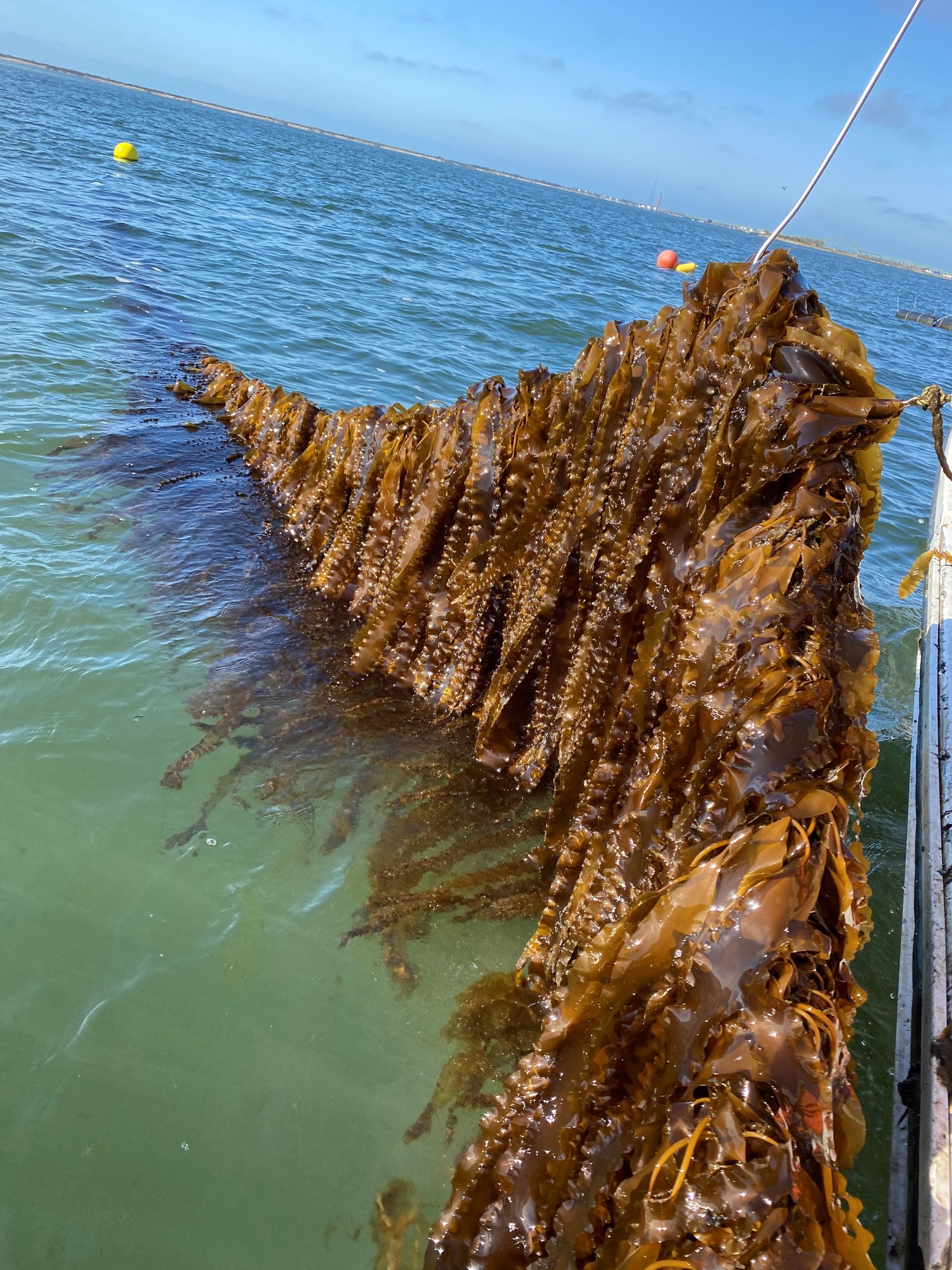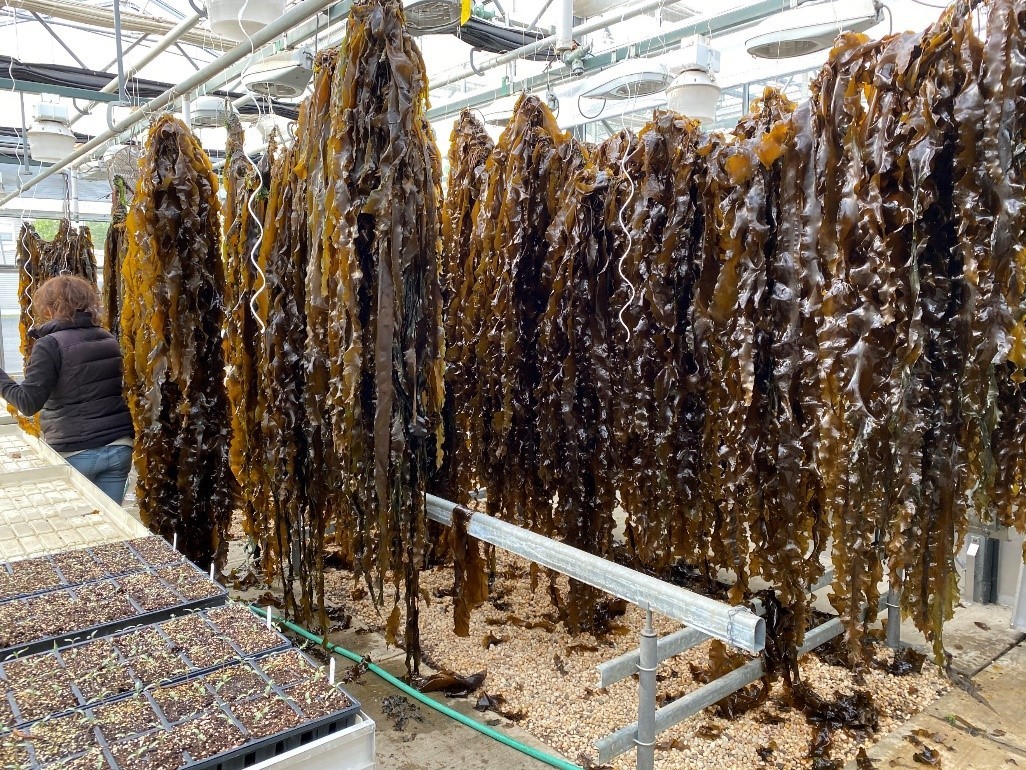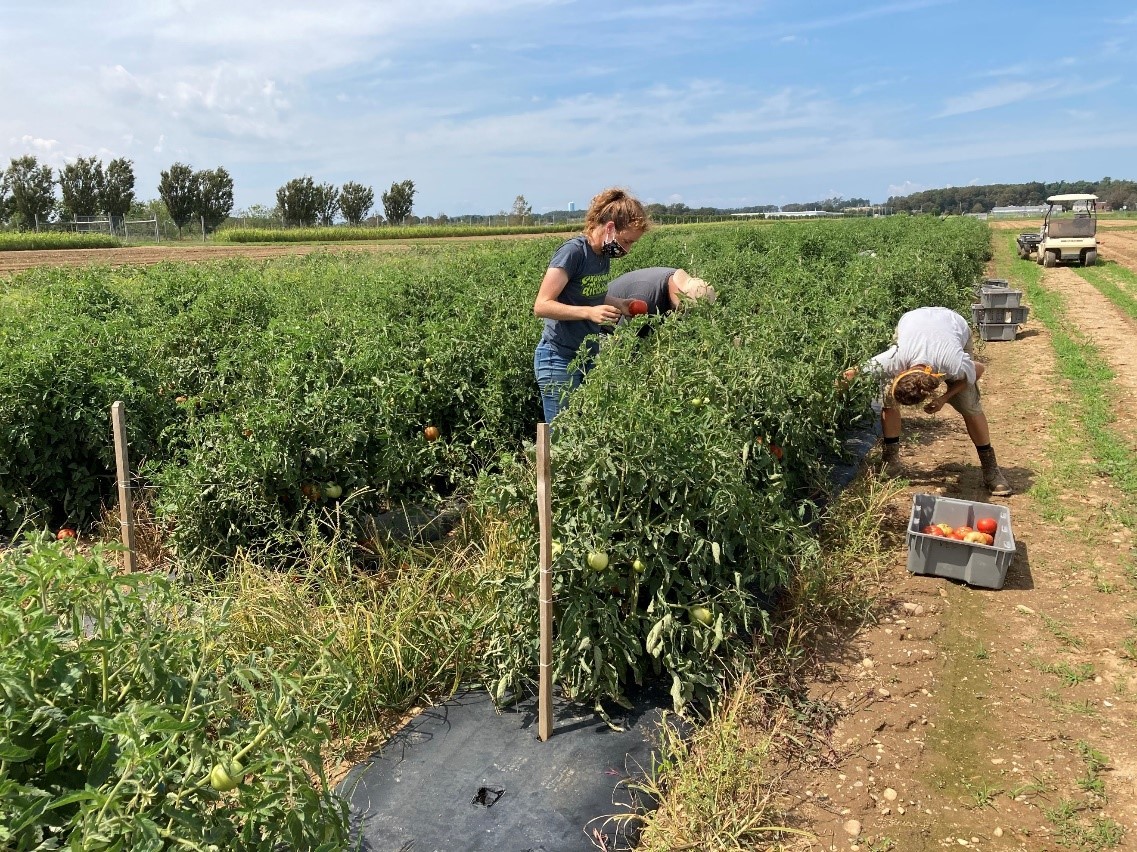Long Island Nitrogen Action Plan (LINAP) – January Newsletter |
Nutrient Bioextraction InitiativeIn 2018, the New York State Department of Environmental Conservation (NYSDEC), the Long Island Regional Planning Council (LIRPC), and New England Interstate Water Pollution Control Commission (NEIWPCC) partnered to start the Nutrient Bioextraction Initiative. The goal of the Nutrient Bioextraction Initiative is to improve water quality in New York and Connecticut marine waters by removing excess nitrogen through the cultivation and harvest of seaweed and shellfish. The Initiative will provide information to help decision makers with the guidelines needed to facilitate seaweed and shellfish farming and harvest operations in their coastal waters. Since 2018 much has been accomplished including pilot projects aimed at supporting the development of a bioextraction industry and the creation of a Geographic Information System based siting tool to identify suitable sites for bioextraction operations within New York’s marine and coastal district and Connecticut’s coastal area. A Shellfish Aquaculture Guidance Document is in development and will assist prospective, new, and existing aquaculture farmers to better understand the laws, policies, and permitting processes applicable to marine shellfish aquaculture in New York. Utilizing Seaweed Aquaculture to Improve Water Quality in New York’s Coastal WatersSugar kelp absorbs and stores nitrogen from surrounding water during its winter and spring growing period making it useful in removing nitrogen pollution. This would allow shellfish growers to diversify by growing kelp during the winter, in their off season. Additionally, its growth period compliments the spring and summer recreational use of Long Island’s marine waters. In addition to its growth patterns, sugar kelp is used as a food source in many parts of the world. Due to the attributes described above, sugar kelp was chosen to use in a pilot study. The sugar kelp was successfully installed at 3 sites in mid-January 2020, and kelp growth and water quality were monitored between February and May 2020. The site that had the most growth (e.g. longest blades and greatest biomass per meter of line), was found to have removed the most nitrogen and carbon from the water. The results of the cultivation portion of this study demonstrate that sugar kelp has the potential to remove nitrogen in Long Island’s marine waters.
Photo Credit: Nelle D’Aversa Throughout the study, and at harvest, samples were tested for nutrients, pathogens, heavy metals, organic contaminants, and pesticides. It was hoped that the kelp would uptake nutrients, like nitrogen, while avoiding the uptake of contaminants that would complicate the use of the harvested kelp for other purposes, such as fertilizer or food. The results showed that the kelp did not take up pathogens, pesticides, or significant amounts of heavy metals. This portion of the study shows that the kelp takes up nitrogen while avoiding the uptake of most other contaminants. The information collected for this study will inform the development of a local bioextraction industry by assisting shellfish growers who wish to diversify into seaweed farming. Additionally, the study provides quality-controlled data on the public health and food safety implications of cultivated seaweed that can be used by federal, state, and county regulators. This project was made possible with funding from the Long Island Community Foundation (LICF). A second year of this study has begun, with funding from the Long Island Sound Study, which includes three sites within the Long Island Sound. The second year of the study will give additional data for growing kelp at sites with varying physical and environmental conditions. An additional part of the pilot project evaluated the potential for using the harvested sugar kelp as an amendment for local agricultural crops. Numerous kelp and seaweed fertilizer products are currently available on the market, but if kelp can be grown, harvested, processed, and utilized locally, that would improve the sustainability of both the marine and agricultural industries on Long Island. By using locally sourced kelp instead of imported products, Long Island farms could create a market to support nitrogen reduction efforts in local waters through seaweed bioextraction. This project investigated the impact of two different types of kelp amendments and application methods on plant and soil properties. The study demonstrated that there is some promise for the use of sugar kelp as an amendment. Further studies will be done to confirm the safety and efficacy of sugar kelp fertilizer amendments and allow for scaled-up testing in commercial greenhouse and/or field settings.
Photo Credit: Cornell Cooperative Extension Ribbed Mussel Feed/Supplement Pilot StudyRibbed mussels are native to Long Island Sound and New York City, with historically large populations that reduce nutrients in the water and stabilize shorelines. Ribbed mussels are not grown for human consumption, so they can be grown and harvested in polluted waters. Also, since they are not used as food for human, their cultivation presents an opportunity to explore other market opportunities. To understand the nitrogen removal capacity of ribbed mussels, a 2-year pilot project to study them is in the beginning stages at two locations in Long Island’s coastal waters. The nitrogen removal rates of ribbed mussel have been studied on a limited basis, so information from this study about nitrogen uptake rates will be combined with the results from other studies and used by resource managers and regulators to have a comprehensive understanding of the value and efficacy of ribbed mussels as a nutrient reduction strategy. Additionally, shellfish harvested from the study will be assessed for use as animal feed. Investigating the nutritional value will support an upcoming Bioextraction Market and Economic Feasibility Study. GIS Tool to Help Identify Suitable Sites for BioextractionAn interactive online map has been developed to aid in the identification of potential locations for shellfish and seaweed farms within New York’s marine and coastal district and Connecticut’s coastal area; it’s called the New York and Connecticut Shellfish and Seaweed Aquaculture Viewer. The map, which provides detailed information on natural resources, environmental conditions, navigation, regulatory requirements, and potential use conflicts is available on the Long Island Sound Study website along with a Story Map guide to introduce users to the Viewer. The goal of the tool is to assist prospective, new or current aquaculture growers in siting new or expanding existing shellfish or seaweed operations and bioextraction projects.
Shellfish Aquaculture Guidance DocumentThe permitting process for shellfish aquaculture was identified as one of the main concerns of the aquaculture industry. A guidance document is being developed for shellfish aquaculture permitting that will assist prospective, new, and existing aquaculture farmers to better understand the laws, policies, and permitting processes applicable to marine shellfish aquaculture in New York. The Guidance Document is in development and is anticipated to be available later this year. To sign up for the LINAP Newsletter, visit the LINAP webpage or click here. |
Footer
Contact
STAY INFORMED
Enter your email address to receive email updates from the LIRPC:






